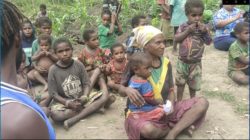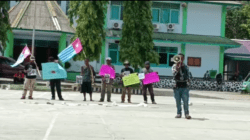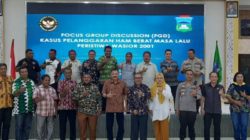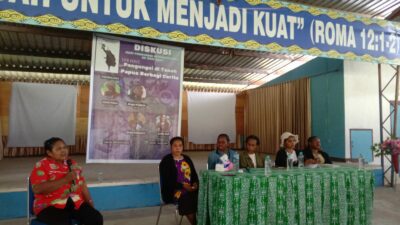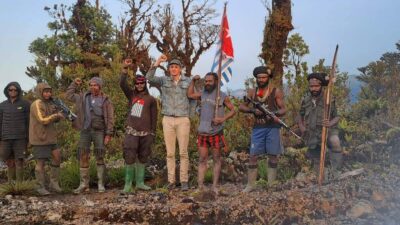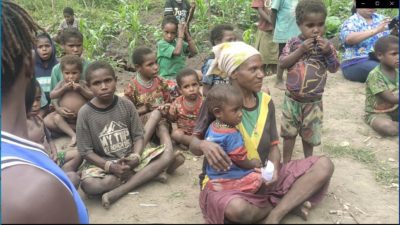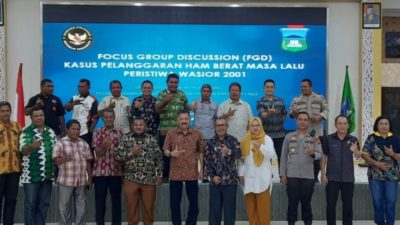
HIV-AIDS still becomes a ‘scary ghost’ for Papua Province.
A data released by the Ministry of Health in March recorded that within 12 years (2005-2017) the number of people living with AIDS in Papua has reached 19,729. This number is the highest rate among other Indonesian provinces, while the total of AIDS cases in Indonesia is 102.667.
The second highest rate of AIDS occurred in East Java for 18,243, following by Jakarta at 9,215, Central Java at 8,170, Bali at 7,441 and West Java at 6,502. However, the data showed that Papua Province is at the third rank for the number of people living with the HIV (29,083) compared to Jakarta (51,981) and East Java (39,633). Following Papua in the fourth and fifth ranks are West Java and East Java with 28,964 and 22,292 cases respectively.
Given the fact that the number of population in Papua Province is lesser than the provinces of Jakarta, East Java and West Java, it makes Papua becoming the province with the highest case rate of AIDS in Indonesia until December 2017. The case rate is cumulative of the number of people living with, died from AIDS and the total number of HIV-AIDS cases per 1000,000 population.
The case rate for Papua Province is 620,56 which 18,149 people living with AIDS and 1,580 people died from AIDS during 1987-2017, whereas West Papua Province is in the second place; at 216,46 including 1,699 people living with AIDS and 42 died from AIDS.
The updated figure for HIV-AIDS cases per 30 September 2018 in Papua Province is 38,874. It shows that Nabire Regency has the highest HIV-AIDS cases (7,420) and it followed by Jayapura Municipality at 6,189, Jayawijaya Regency at 5,964, Mimika Regency at 5,670 and Jayapura Regency at 2,918.
Most cases occurred in Papua are due to sexual intercourse with several partners which reach 14,148 (HIV) and 23,610 (AIDS), whereas another factor is the Most cases or risk factors occurred in Papua due to sexual intercourse with several partners are 14,148 (HIV) and 23,610 (AIDS). Another factor is the transmission from mother to child that reaches 212 for HIV and 473 for AIDS.
Responding to this situation, the Chairman of AIDS Commission (KPA) of Papua Province Constant Karma told Jubi on Wednesday, 22 November 2018, that firstly people must fully understand about the transmission of HIV.
He said HIV is transmitted through blood, semen, vaginal fluids if we have direct contact with wounds on the skin or open mucous membranes of people who already infected, such as mouth, nose, vagina, rectum and penis’ external urethral.
“HIV can also be transmitted through vaginal, oral and anal sex, as well as contact with blood and other body fluids. But kissing can be safe if both partners have no sore or mouth sprue. Touching, hugging and normal interacting with people infected with HIV are also safe,” he said.
He recommends people to have safe sex by using a condom and avoiding touching blood or other people’s body fluids.
“We never know who has HIV, because there is no stereotype and perhaps people don’t realise that they are already infected. So avoid to have direct contact with blood and body fluids of other people because it might have risks for HIV transmission, especially if we have open sores on any part of our body,” he said.
Karma said that the high rate of HIV-AIDS in Papua was due to people are still reluctant to conduct examinations.
“This figure indicates that the rate of people who already entered the stage of AIDS. It becomes a problem because if they get at this stage, it will be difficult to recover their condition,” he said.
Karma also said that KPA still difficulties related to funds to reduce the number of people living with HIV-AIDS in Papua. “In the past, we have collaborated with some international NGOs but not anymore because Indonesia currently regarded as a developed country. Therefore these NGOs are paying more attention to other developing countries,” he said.
Moreover, he said KPA Papua’s funds are insufficient to cover all areas of Papua, especially the mountain areas.
AIDS prevalence has reduced since 2014
Head of the Technical Implementation Unit for AIDS, TB and Malaria, Papua Health Office, dr. Beery Wopari, said that since 2014 HIV and AIDS cases in Papua had decreased, although not too significant.
“In 2014 there were 4,452 new cases found in 29 regencies and municipality, but until 2018 there were 1,993 new cases detected or found,” he said. It means that most people are willing to conduct health examinations or do early detection of the disease, explained Wopari.
“Although it is undeniable that many people are still reluctant to conduct medical checks,” he said.
Wopari hopes that the elimination process carried out by Nabire Regency which has the highest HIV-AIDS rate can be emulated by other districts in Papua Province. Nabire District Health Office has carried out medical checks for people who come for treatment at the community centres.
“The number of people living with HIV and AIDS in Nabire is currently growing. There is a regulation that requires all community centres in Nabire to carry out the preliminary tests to all patients who come for treatment to reduce it. “It is good so that we can treat people who have been infected with HIV before the patient enters the stage of AIDS,” he said. (*)
Reporter: Roy Ratumakin
Editor: Pipit Maizier






